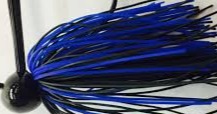Fishing is a timeless outdoor activity that blends skill, patience, and the right equipment. While rods, reels, and bait often get the spotlight, fishing hooks are equally important in determining success. A good hook can mean the difference between a secure catch and a missed opportunity. Understanding the types, sizes, and materials of fishing hooks will help both beginners and experienced anglers improve their catch rate.
Understanding Fishing Hooks
Fishing hooks are small but essential tools used to catch fish by latching onto their mouth or body. They come in a variety of shapes, sizes, and designs, each suited to specific fishing techniques and target species. The basic structure of a hook includes the point (which penetrates the fish), the barb (which keeps it from escaping), the bend, the shank, and the eye for attaching to the line. Choosing the right hook depends on factors like the type of fish, fishing environment, and bait being used.
Different Types of Fishing Hooks
There is a wide range of fishing hooks available, each serving a specific purpose. J-hooks are the most common and versatile, working well for a variety of species. Circle hooks are designed to hook the fish in the corner of the mouth, making them ideal for catch-and-release fishing. Treble hooks, with their three points, are often used in lures for species that strike aggressively. Double hooks, offset hooks, and barbless hooks each have their unique applications depending on the fishing method and regulations.
Hook Sizes and Their Importance
Hook sizes can be confusing at first because they are numbered uniquely. Small hooks are indicated with larger numbers, such as size 20, while larger hooks are marked with smaller numbers or even zero-based sizes like 1/0 or 5/0. For example, small hooks are suitable for panfish or trout, while larger hooks are better for bass, catfish, or saltwater species. Using the correct size ensures that the fish can bite easily while still being securely hooked.
Materials and Coatings
Fishing hooks are usually made from high-carbon steel, stainless steel, or a combination of metals. High-carbon steel hooks are strong and sharp but may rust if not properly cared for, whereas stainless steel hooks resist corrosion, making them ideal for saltwater fishing. Hooks often have coatings such as nickel, tin, or Teflon to increase durability, prevent rust, and improve penetration. Choosing the right material and coating depends on where and how you fish.
Barbed vs. Barbless Hooks
Barbed hooks have small backwards-facing points that help keep the fish from escaping once hooked. While effective, they can be more damaging to the fish, making them less suitable for catch-and-release. Barbless hooks, on the other hand, are easier to remove and cause less injury, but they require careful tension control to prevent the fish from slipping away. Many fishing areas have regulations requiring barbless hooks to protect fish populations.
Matching Hooks to Bait
The type of bait you use plays a big role in hook selection. Live bait such as worms, minnows, or crickets works best with hooks that can securely hold the bait without hindering its movement. For artificial lures, treble hooks or specific jig hooks are often integrated into the design for maximum efficiency. Soft plastic baits like worms or grubs work well with offset or worm hooks that keep the bait aligned and lifelike in the water.
Specialised Hooks for Different Techniques
Some fishing methods require specialised hooks. Fly fishing uses tiny, lightweight hooks that can hold feathers and other materials for imitation flies. Trolling for large saltwater fish may require strong, corrosion-resistant hooks. Ice fishing often uses small, lightweight hooks suited for cold water species. Understanding these variations helps anglers match their gear to their chosen fishing style.
Tips for Maintaining Fishing Hooks
A sharp, well-maintained hook is crucial for successful fishing. Over time, hooks can become dull or bent, reducing their effectiveness. Sharpening hooks with a fine file or hook sharpener can restore their point. After fishing in saltwater, always rinse hooks with fresh water to prevent corrosion. Storing them in a dry tackle box with anti-rust strips helps extend their life. Regularly inspecting hooks before each trip ensures you are always fishing with reliable gear.
Conclusion
Fishing hooks may be small, but they play a vital role in every catch. Understanding their types, sizes, materials, and proper maintenance can greatly improve your fishing success. By matching the right hook to your target species, bait, and fishing method, you set yourself up for more consistent and rewarding results. Whether you are casting in a peaceful freshwater lake or battling powerful saltwater species, the right hook is your most trusted ally. Mastering the art of choosing and using fishing hooks will not only make you a better angler but also enhance your overall fishing experience.

